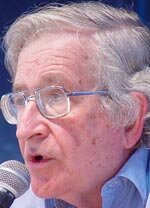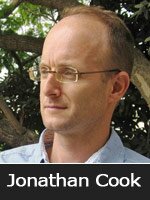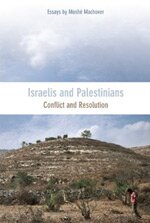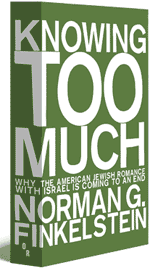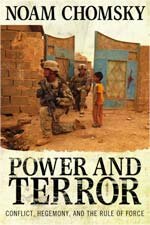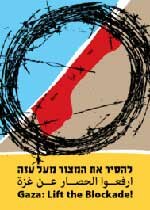Haaretz: Skeletons, High Court rulings, bigwigs embroiled in other scandals, a world-famous architect and some Hollywood panache − all are part of the story of the Museum of Tolerance, slated for one of the most sensitive parts of Jerusalem: on top of a Muslim cemetery. For the first time, Haaretz reveals evidence of a highly dubious, five-month rescue excavation that took place secretly on the site, plus other previously unknown details. A three-part saga.
IOA Editor: This important Haaretz investigative report consists of six articles covering different aspects of the development of the Jewish “Museum of Tolerance” to be constructed atop the historic Muslim Mamilla Cemetery. The Haaretz Hebrew website series is entitled (as of 18 May 2010) “Museum of Intolerance” and the English website series is entitled “Museum of Tolerance Special Report.” The latter version is included on the pages of the IOA.
Why is this report important? The Mamilla Cemetery is a Muslim cemetery with thousands of grave sites that go back some 1200 years. Grave sites are sacred to both Islam and Judaism. This case demonstrates vividly how important it is for Israel to eradicate every possible trace of Palestinian life from the history of Palestine – chapters of history that document non-Jewish life – and doing so even at the risk of embarrassment and international criticism. And while the erasure of the history of the Palestinian dead is important, it actually compliments a far greater injustice: the razing of some 500 Palestinian villages by Israel during the 1948 Nakba and the Occupation.
As is often the case, Haaretz’ two language versions need not be the same and, as indicated by the different series headers, the English version may be toned-down or lack important details, sometimes those that are more critical of Israel than the Haaretz editors wish to publish outside of Israel.
By Esther Zandberg, Haaretz – 18 May 2010
www.haaretz.com/magazine/museum-of-tolerance-special-report/museum-of-tolerance-special-report-time-to-bury-the-project-with-the-bones-1.290966
A quick glance at the plans for the Museum of Tolerance makes it clear why the huge area allotted and inconceivable investment in titanium and glass have sparked a protest among people who care deeply about Jerusalem
The world is full of graves. The world is full of remains. The world is full of skeletons − metaphoric ones, too. If you dig deep enough, there will always be a reasonable chance that beneath every building or park or highway, ghostly memories from the past will be unearthed, which are only waiting for the right moment to arise from their slumber. When they reach the surface, you can depend on them to spur a scandalous affair, to foment an uproar. Power struggles, national conflicts or political interests that have some legitimacy − and are often subsumed under the rubric of “religious sensitivities” − provide endless golden opportunities for memories to emerge from their place of rest and air their grievances.
Without making light of the controversy over the graves beneath the site designated for the emergency room of Barzilai Medical Center in Ashkelon, and the ruckus resulting from those dry bones found there, the affair of the Muslim cemetery located under the site of the proposed Museum of Tolerance in Jerusalem is much juicier. This is due to its location in the capital, a city already besieged by scandals, and also to the critical issues involved. It’s not only a life-and-death matter.
This affair is juicy first of all because the national interests and emotions that have surfaced as a result far exceed the boundaries of the cemetery itself. After all, the peace and quiet of these dry bones was already disturbed during previous construction in the area, early in the 20th century. But this time what is at stake is nothing less than a direct blow to the heart of the Israeli-Palestinian conflict; it is a fire to which an overdose of fuel has been added. And in Jerusalem! It’s no wonder the flames are reaching the heavens.
The whole debacle is further exacerbated by the fact that what is due to be constructed on the property of the Mamilla cemetery is not a hospital, a highway or even a parking lot (there already was one on part of the area) − but, ironically, a “museum of tolerance.”
When it comes to such an example of Orwellian irony, in a city that is the universal epitome of intolerance, it really is impossible to carry on with business as usual: If ever there were a justified and easily explained uproar, it’s this one. It has a full right to erupt and balloon even beyond all proper dimensions.
World-famous American Jewish architect Frank Gehry, who withdrew in January as designer of the proposed building, made an immodest contribution of his own to fanning the flames. A top-flight master architect, winner of the Pritzker Architecture Prize, a man who constitutes a school of architecture in and of himself − Gehry is a “brand name” whose works arouse strong feelings even without graves. Of course, the fact that a religious figure from a Jewish institution (the Los Angeles-based Simon Wiesenthal Center, which has its own Museum of Tolerance) stands behind the new museum is crucial when it comes to those graves − and also adds a dose of cynicism. But Gehry’s plans have contributed substantially to the commotion: His is an extravagant sculptural structure of huge dimensions, infuriatingly bizarre and curvaceous, a strange-looking edifice that threatens to trample the existing historical municipal fabric for no obvious reason.
Furthermore, the incredible financial investment in the project’s construction − due to total some NIS 1 billion, according to reports − in a desperately poor city like Jerusalem, was already too much. With different players, and at a bargain price, things would probably not have reached this point and the building would already have been erected in downtown Jerusalem, to our regret.
On second thought, using a sort of reverse logic, in the final analysis, only good can emerge from this story. The bones that have proven their power to fan flames may succeed in putting paid to this entire undertaking, thus rescuing Jerusalem from another grandiose and expensive architectural monstrosity.
Olmert’s scandalous vow
Tolerance has no need of a museum; it needs to be practiced on a daily basis. In order to teach tolerance in the Holy City, it’s enough to join the tours along the separation fence, to visit the checkpoints surrounding the city, to count policemen on holidays and festivals, or to read Gideon Levy’s columns in this newspaper about the injustices and the oppression of the occupation.
In any case, the museum’s entrepreneurs, for their part, are clearly not even dreaming about touching on the essence of intolerance. “The center will promote unity and tolerance among Jews and people of all faiths by means of an environment free of political, theological or ideological viewpoints,” they declared when a model and plans were first presented at an official ceremony at the President’s Residence in 2002. The intolerance in Jerusalem is political. And if only for that reason, every single one of the 48,000 square meters of the museum is a waste, whether they are designed by Frank Gehry, who has since announced his withdrawal, or by another architect.
A parenthetical comment: At the same ceremony at the President’s Residence − which was an embarrassingly over-dramatic event, as though what was at stake was no less than the building of the Third Temple by God’s representative on earth − the mayor of Jerusalem at the time, Ehud Olmert, vowed: “I will do everything, in any position I fill, to ensure that the building is constructed without bureaucracy and without obstacles.”
That was a scandalous promise. The job of a mayor and his primary obligation to his electorate is to safeguard the public interest in municipal projects; not to stand by entrepreneurs, like the Wiesenthal Center people, who have their own interests at heart. The role of the municipal planning system is to keep an eye on even the pettiest bureaucratic detail involved in approval and execution of a project; to place “obstacles,” in other words demands, before it; to ask tough questions; and to guarantee that the project will contribute to the good of the city and all its residents.
In addition, the choice of Frank Gehry, among anyone who knows the nature of his “merchandise,” arouses the suspicion that the promotion of tolerance was not the entrepreneurs’ first priority, but rather a desire to demonstrate a “presence” in the Holy City and to repeat what is known in the world of architecture and tourism as the “Bilbao effect.” The reference is to a marginal city in the Spanish periphery that is now on the map of global tourism thanks to Gehry’s branch of the Guggenheim Museum there, which has wrought an economic miracle. Since Bilbao, every city in the world wants to repeat this story; to become an overnight sensation that draws millions of tourists who will come in droves to see the latest architectural wonder.
But Jerusalem is not just any city, and certainly not a marginal one. It has no shortage of architectural and other attractions, and to be on the map it has no need of Frank Gehry. For thousands of years, and not always to its benefit, this city has not only been on the map but at the “center of the universe.” This doesn’t help the city much, and has not brought about any economic miracles. It’s also not at all certain that tourists would flood the proposed museum’s entrances, because even tourism is politics, and to see Gehry you can go on a pilgrimage to his works in cities that are friendlier to humanity than Jerusalem.
Curves and sheathing
As to the specifics of its design, much as it would be unique on the Israeli and Jerusalem landscape, this project − meant to revitalize Jerusalem’s city center, among other things − is strikingly similar to others by Gehry. Here too he chose to cover substantial parts of the roof and the outside of the building with glass (which has to undergo special treatment against the Jerusalem sun), and others with a sheathing of blue titanium − a special favorite of his. The other walls were to feature the stone facade that is required in Jerusalem’s buildings. The most prominent aspect of the design was its curved lines, for which Gehry is also famous and which were considered trailblazing at the start of his career.
Inside the complex, aside from exhibition areas, there were plans for a theater, lecture halls, an international convention center, a library and various services such as a restaurant and an underground parking lot for 560 cars.
The Jerusalem museum was supposed to be three times as large as its counterpart in Los Angeles, with a maximum height of 30 meters (about 10 stories). It was supposed to be erected on an open public area of 14 dunams (3.5 acres), on both sides of Hillel Street, between Nahalat Shiva and Independence Park. West of that area there are plans for the Jerusalem courthouse complex, which is even larger than the center itself.
In any event, he announced his withdrawal a few months ago, in a much different world from that in which he began the planning, at the beginning of the decade. In light of global economic and environmental crises, a new ecological awareness and the Obama era, architecture like that of Gehry and his ilk arouses unease and hesitation. Meanwhile, the “Bilbao effect” has also become an object of satire.
Gehry is not the only one in his “circle” whose work is now being cut back to some extent, and he may have anticipated the new directions in which the wind is blowing. Even if this was not the reason he bailed, by leaving the project − he marked his escape route. Not only from building according to his plan, but from the initiative altogether.
This is the time to bury the Museum of Tolerance, together with the dry bones, for the sake of tolerance. Olmert is now released from his vow in any case, and in the ensuing peace and quiet, with the money that will be saved, there is a lot to be done to promote human dignity and proper planning in Jerusalem. The list is long − all the authorities have to do is to decide where to begin.
IOA Editor: Esther Zandberg writes on architecture and city planning
NEXT: Part VI – Emotional games
Haaretz Special Report
Mamilla Cemetery Special Report: Introduction
Mamilla Cemetery Special Report: Part I – Holes, Holiness and Hollywood
Mamilla Cemetery Special Report: Part II – Secrets from the grave
Mamilla Cemetery Special Report: Part III – Response to the revelations
Mamilla Cemetery Special Report: Part IV – An exhibition of Zionism
Mamilla Cemetery Special Report: Part V – Time to bury the project with the bones
Mamilla Cemetery Special Report: Part VI – Emotional games
Mamilla Cemetery Special Report: Original Report (Hebrew)
Related Articles
Compare and contrast – the treatment of Jewish burial sites in Israel:
Decision to move Ashkelon hospital ER spurs wave of criticism
On the rich, ‘multi-cultural’ history of Jerusalem:
Juan Cole: Top Ten Reasons East Jerusalem does not belong to Jewish-Israelis
FOLLOW UP
Following Haaretz report: Arabs to resume Museum of Tolerance battle
Nir Hasson: What to do with the graves?
Complete list of coverage of the Mamilla Cemetery case on the IOA





















